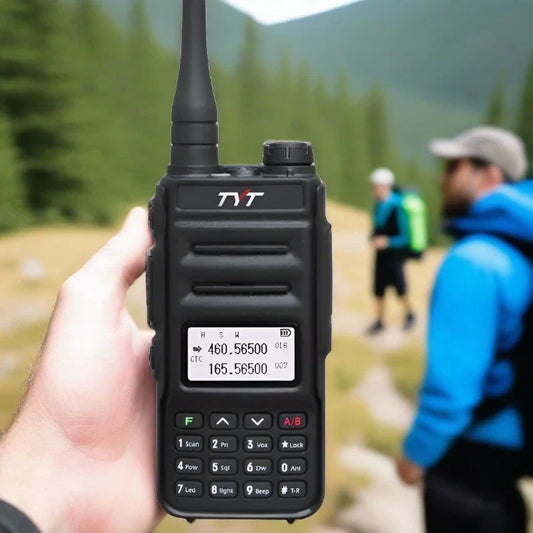Understanding the codes that law enforcement officers (to be referred to as LEO's throughout the remainder of this article) use can be important for your own safety and the safety of others, and can also just be fun!
Know what Police 10 Codes are. Police 10 Codes, also known as ten-codes or police scanner codes, were invented just before the second World War by the Association of Public-Safety Communications Officials. They were designed to reduce speech on police radio transmission using shortcodes that represent common phrases and terms.
SKIP THE ARTICLE AND BROWSE POLICE SCANNERS HERE!
Know how Police 10 Codes can be useful to you. Whether you are aspiring to become a LEO, or just looking to expand your vocabulary, 10-codes can inform you of what is going on at the scene of a crime, or when you are on the streets. You can know when a riot is about to break out, or where there could be a shooting in progress that you can now avoid. And for more practical uses, you can know where there might be an accident on the highway which may cause traffic.
Understand that a LEO may not want you to listen. If a LEO knows you are listening, and they want to protect sensitive information, they might transmit a 10-13, which means civilians are present and listening. The dispatch and other LEO's now know to be careful what information they transmit, and will sometimes say other things to throw off bystanders, or even cut transmission completely.
Learn the "Top Ten" Police 10 Codes. Learning the most common 10-codes can be the most vital to understanding common speech on the radio transmissions.
- 10-4 Message received, affirmative
- 10-6 Busy
- 10-9 Please repeat your message
- 10-10 Negative
- 10-12 Standby
- 10-13 Civilians present and listening
- 10-18 Urgent
- 10-22 Disregard
- 10-61 Personnel in area
- 10-78 Need assistance
Know which Police 10 Codes mean danger. You should hope that you don't have to hear these, but if you do, know that you should do everything in your power to avoid the danger.
- 10-32 Person with gun
- 10-34 Riot
- 10-71 Gun involved with intent of firing
- 10-72 Shooting in progress
- 10-79 Bomb threat (also 10-89)
- 10-80 Bomb exploded
- 10-94 Drag racing (This may sound like fun, but it isn't safe...)
- 10-96 Psych patient (Not all psych patients are dangerous, but they should not be approached unless by a medical professional or LEO)
- 10-98 Jail/Prison break
- 10-100 Dead body (You shouldn't want to see that)
Understand that the use of this knowledge is still limited. Not all police jurisdictions and agencies have the same meaning for every code but are most times similar if not the same. If you are trying to listen in on radio transmissions for the FBI, ATF, or DEA, it may be different than for your local police department, as an example. Also, know that listening in on a federal agency may be more difficult to do, and may be very illegal.
- Always use your better judgement when listening to Police 10 Codes.
- When studying Police 10 Codes, writing them down may help you remember them, and it may also benefit you to have a written reference on you.
- You can obtain your own police scanner radio on your smartphone by doing a search for "police scanner" in your app store, but please take a look at the Warnings section of this article for the legalities of doing so. It is also recommended that you check in with your local law enforcement agency before continuing.
- Many police agencies now use "digital" modes, making it impossible to listen using old "analog" scanners. However, it is a simple process to purchase and program a digital scanner, using "P25" coding or other standards, so you can listen to many public safety channels in digital mode.
- Police agencies in the state of New Hampshire have adopted completely different meanings for all 10-codes. For example, "10-4" means "repeat your last message" and "10-5" means "acknowledged". They also use special codes for things like "radio silence”.
ARE YOU LOOKING FOR A RADIO SCANNER - CLICK HERE!
Attribution: https://www.wikihow.com/Understand-Police-Scanner-Codes









